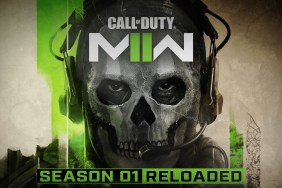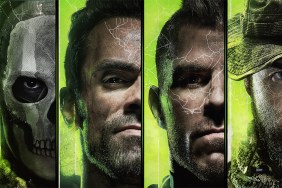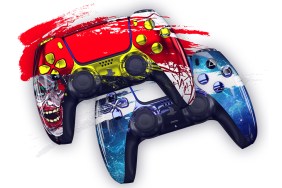Yours to command.
When Battlefield 1942 was first announced, it seemed like just another World War II game destined to clutter up shelves. But after losing countless hours to its innovative multiplayer, we realized Battlefield 1942 wasn’t just another anything – it was the proud father of a new game format.
After countless imitators, the beast is back in Battlefield 2. Though officially the third installment in the series, Battlefield 2 is being billed as the first true sequel. Guess everybody just wants to forget about Vietnam…and that won’t be hard after spending some quality time with this solid online soldier.
Battlefield 2 presents the same large-scale multiplayer experience as its forebears, complete with huge maps and lots of vehicles to crash into them. Unlike the historical themes of the other BF games, this one is based on a fictional war between China, the U.S., and the fictitious Middle-Eastern Coalition. Hence, all of the battles take place in China and the Middle East.
All twelve maps are well designed and every single one comes in three different sizes. Sixteen player maps feature some light armor and maybe a couple choppers, thirty-two player maps feature lots of vehicles and maybe even some planes, and sixty-four player maps cover humongous areas and feature all the vehicles you can handle.
Just like 1942 and Vietnam, Battlefield 2 offers multiplayer action in the form of Conquest matches. In case you just got broadband, these feature two sides on a map with several control points. If one side captures a majority of these points, the other side will start to lose tickets, which are needed to purchase a respawn every time a soldiers dies. When one side loses all their tickets, the match is over.
Most gamers know all of this already and will be happy to see it return intact. However, they’ll probably be a little disappointed to hear that Battlefield 2 is still a Conquest-only game, meaning no objective-based battles. We’ve seen some cool multiplayer modes emerge since Conquest changed the landscape (UT 2004‘s Assault or Onslaught modes, for example), and it would have been great to see some sort of twist on the formula. Indeed, only one playable mode might be a deal-breaker in a lesser title, but Battlefield‘s Conquest matches are the gaming equivalent of Wolfgang Puck pizzas or Mrs. Smith Pies – world-famous and worthy of the admiration. It’s just a shame that developer DICE doesn’t put their considerable talents to learning other recipes for disaster.
Still, they added some powerful new ingredients. The new chain-of-command scheme should tickle the palettes of hardcore Battlefield gamers and clans, although casual and new players might find the complexity overwhelming. But whether you’re a commander on a team full of pros or a weekend warrior trying to manage a rag-tag group of scrubs, understanding this scheme will definitely improve your game.
Before a match starts, one player on each side can apply to become their team’s commander, while other players form or join squads under the commander’s control. Commanders can speak through voice-chat to squad-leaders and play with a sweet overhead map of the battlefield. From here, they can order their squads to various locations, drop healing supplies and ammo, scan the battlefield for vague representations of enemy troop movement, deploy unmanned predator drones for more detailed info and order artillery fire.
As the leader of a decent band of Battlefield brothers, you’ll be able to use all of these features to their maximum potential via the awesome VOIP (Voice Over Internet Protocol) system. With VOIP, commanders are able to speak to squad leaders, who in turn can relay orders to their mates.
It brings a natural order to the chaos of war and creates some interesting new team play dynamics
If you keep things simple, the VOIP system can be very effective, even when surrounded with scrubs and new guys. The commander is an actual unit on the field, just with some very special abilities. How you use these abilities in conjunction with regular class skills is up to you, but I would simply tell my team to take the northern half of the map and cruise the southern half in a jeep, blasting enemy control points with artillery fire before swooping in with predator drone support and machine-gunning any survivors. Rambo, eat your heart out.
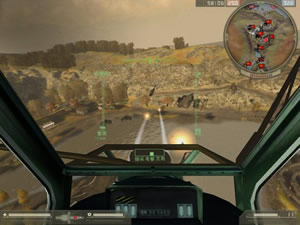 The same goes for life as a squad leader. If you aren’t an important cog in a well-oiled war machine, you at least benefit from the fact that other members of your squad can spawn in on your position. So, for example, if you’re a leader riding solo in a vehicle, chances are pretty good that someone will spawn in and assume a gunner position. On the flipside, if you’re a squad-member you can spawn in on your leader and be guaranteed at least one person to fight alongside. Be you noob or elite, you will appreciate the benefits of the chain-of-command system.
The same goes for life as a squad leader. If you aren’t an important cog in a well-oiled war machine, you at least benefit from the fact that other members of your squad can spawn in on your position. So, for example, if you’re a leader riding solo in a vehicle, chances are pretty good that someone will spawn in and assume a gunner position. On the flipside, if you’re a squad-member you can spawn in on your leader and be guaranteed at least one person to fight alongside. Be you noob or elite, you will appreciate the benefits of the chain-of-command system.
Especially in the way it’s integrated with class duties. For example, a commander’s powers are dependent on the well being of certain structures, which Special Ops class soldiers can destroy with C4. In turn, these structures can be repaired by the Engineer class. Sniper, Support, Medic, Assault and Anti-Tank classes round out the list, and though every class has a fairly specific function, they’re all given ample means to defend themselves in a basic skirmish. Besides main and secondary weapons, many classes also get explosives, such as claymores or anti-vehicle land mines, while the support classes (medic, engineer and support) create a beneficial aura around any vehicle they’re in. For example, a vehicle with an engineer in it will automatically repair damage done to any nearby vehicles, making well-balanced squads particularly lethal.
To guarantee that every role is worth exploring, DICE implemented a reward system based on points accrued for doing the things your class is supposed to do. If you go around healing and reviving comrades left and right as a Medic, you’ll start to rack up points and medals even if you don’t manage to score many kills. As you gain points, you’ll start progressing through Battlefield 2‘s ranking system. It’s a slow process that eventually unlocks a new gun for each kit when you reach the higher ranks. We were hoping gaining ranks would also gain access to minimum-rank servers, thus keeping vets and rookies out of each others’ hair, but there is no such system in place.
Such a rookie/veteran collision would also have been mitigated by any sort of tutorial system, but alas, there is none. The only way for new players to learn the ropes is to jump into the same servers as everyone else and start invariably crashing their team’s planes and choppers. Even worse is when a commander calls for an artillery strike and a noob rushes into the area thinking the red marker denotes “Action here!” Then, when the noob gets blown to smithereens, he’s informed by the game that he was team-killed, and asked whether or not he would like to punish the team-killer. Not knowing any better he says “Yes,” and winds up taking points from his commander. Oh, the irony.
Noob-tastrophies aside, Battlefield is a hard game. The steep learning curve has not lessened over the years, and the chain-of-command system, while certainly more rewarding for good players, only makes it harder for those new to the format. To the game’s advantage and disadvantage, it’s the definition of trial by fire.
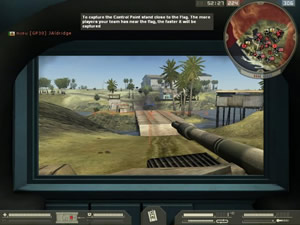 Battlefield 2 does feature some single-player content, but it’s pretty pointless. If the insane urge strikes, you can battle against bots on sixteen-player versions of ten of the maps, although you have no control over individual bot A.I., vehicle spawning or, well, anything. You can try to command your troops, but they’re actually worse than a pack of noobs. We suspect most of their behavior is pretty set in stone.
Battlefield 2 does feature some single-player content, but it’s pretty pointless. If the insane urge strikes, you can battle against bots on sixteen-player versions of ten of the maps, although you have no control over individual bot A.I., vehicle spawning or, well, anything. You can try to command your troops, but they’re actually worse than a pack of noobs. We suspect most of their behavior is pretty set in stone.
As are the game’s steep system requirements. If you don’t have a burly graphics card and about a gig of RAM, you probably won’t be playing Battlefield 2 any time soon. And that’s a shame, because this one looks and feels better than all the rest thanks to its spiffy new engine. With this bad-boy under its hood, the draw distances have been pushed way back and the level of detail jacked way up. Everything looks and feels tight, making Battlefield 2 both fun to play and a blast to watch.
The music only features two tracks, with respective Middle-Eastern and Chinese themes, but they both sound fine without ever becoming annoying. The in-game sound effects are marvelous and diverse, while the VOIP works like a charm as long as your teammates can figure out how to use it.
Now if only DICE can figure out how to address some of the issues that have plagued the Battlefield games since 1942, like bad single-player content and a pervasively noob-hostile atmosphere, we’d be in gaming heaven. As it stands, we’re slightly below that. Battlefield 2 manages to greatly improve on an already proven series, with schemes and systems that should benefit those patient enough to learn the grammar of this game’s esoteric controls and symbols. Battlefield 2 may not be everything you’d want in a third entry, but it’s still the best Battlefield yet and one on which we’ll be happy to die.
-
It's good to be the commander
-
Class rewards
-
Looks fantastic
-
VOIP rocks
-
There is always something fun to do
-
No viable offline play
-
No significant new modes
-
Intimidating system requirements
-
Unless you're a noob







